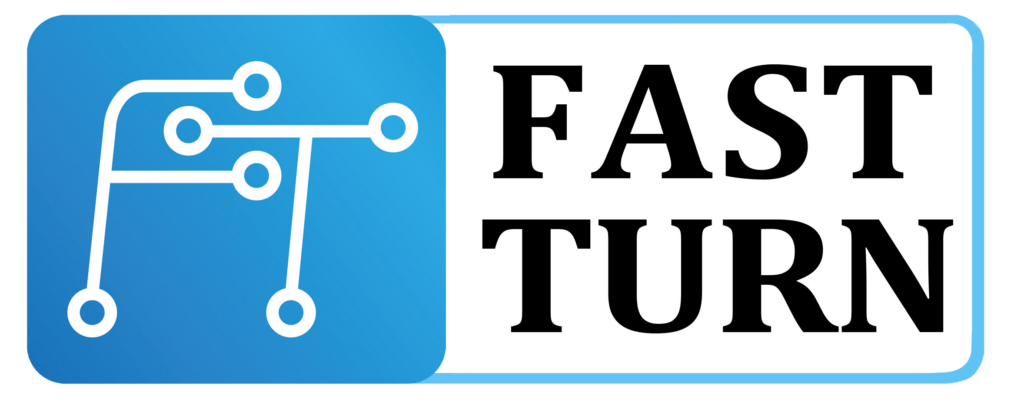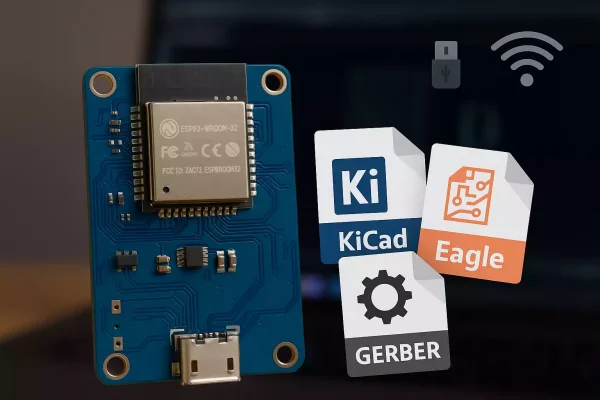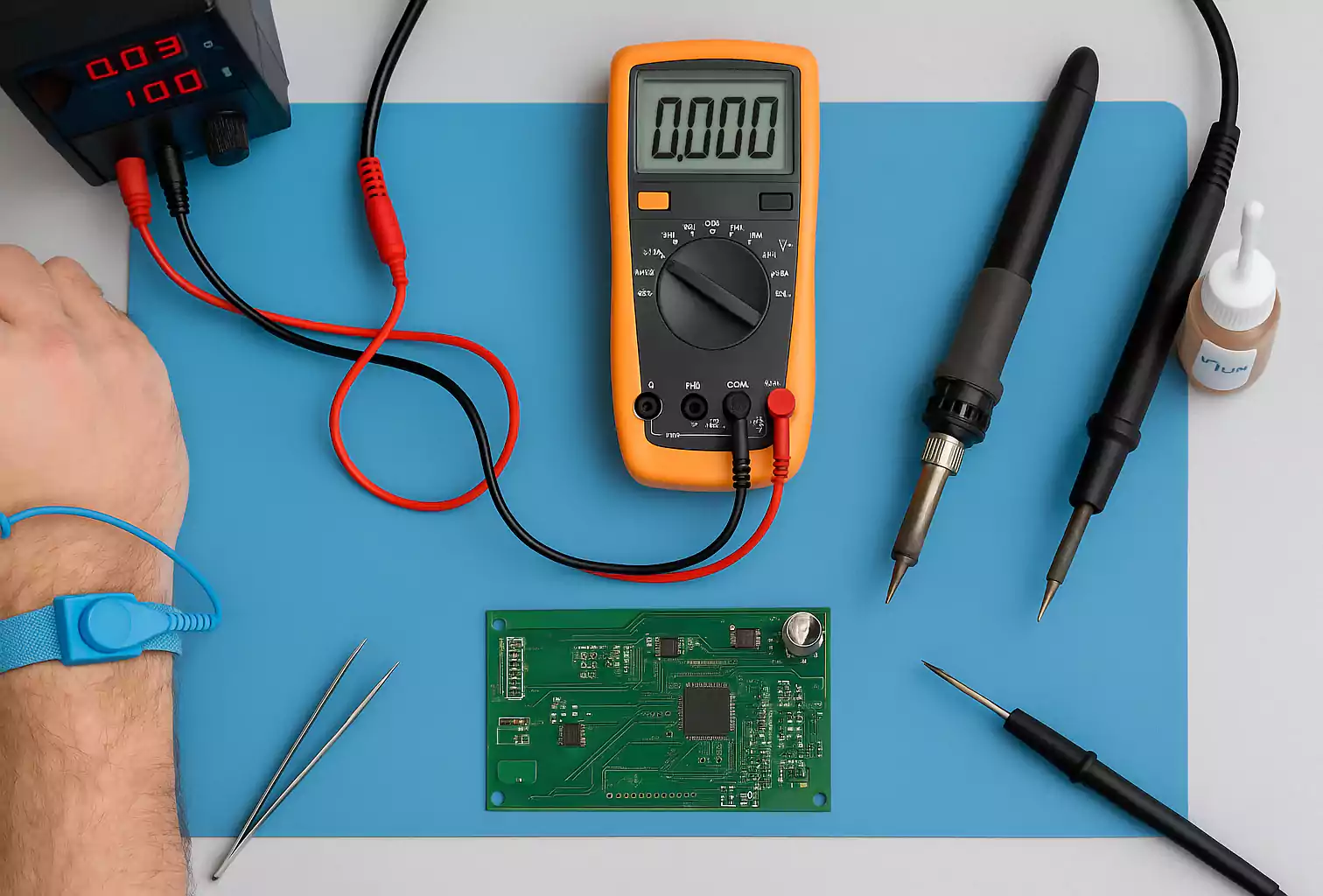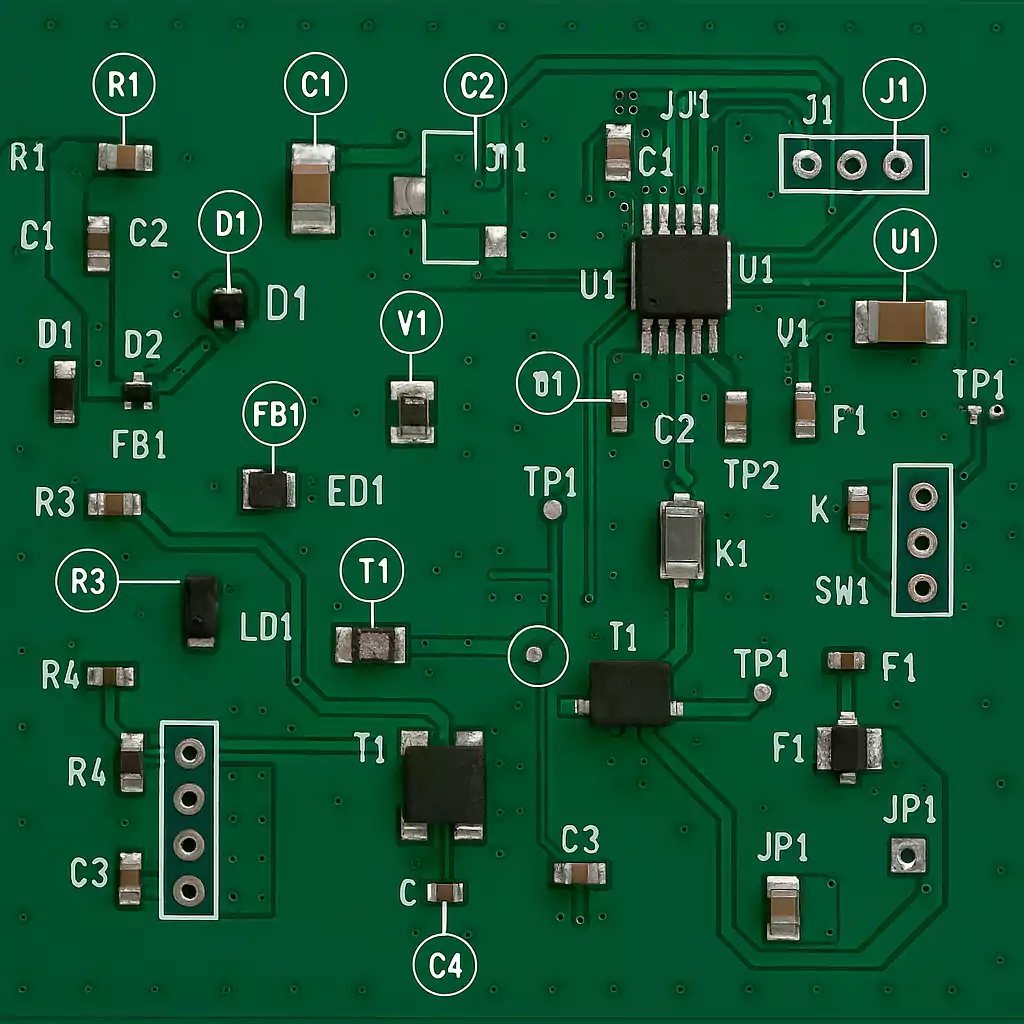If you’re working on a new IoT or embedded project, chances are you’ve looked for a reliable Esp32 PCB file downloads to jump-start your design. Whether you’re using KiCad, Eagle, or Altium, starting from a proven schematic and layout can save you hours of trial and error.
This guide collects the best ESP32 PCB files — from official Espressif reference designs to popular open-source boards — and walks you through how to edit, verify, and order your own board quickly. Let’s dive in.
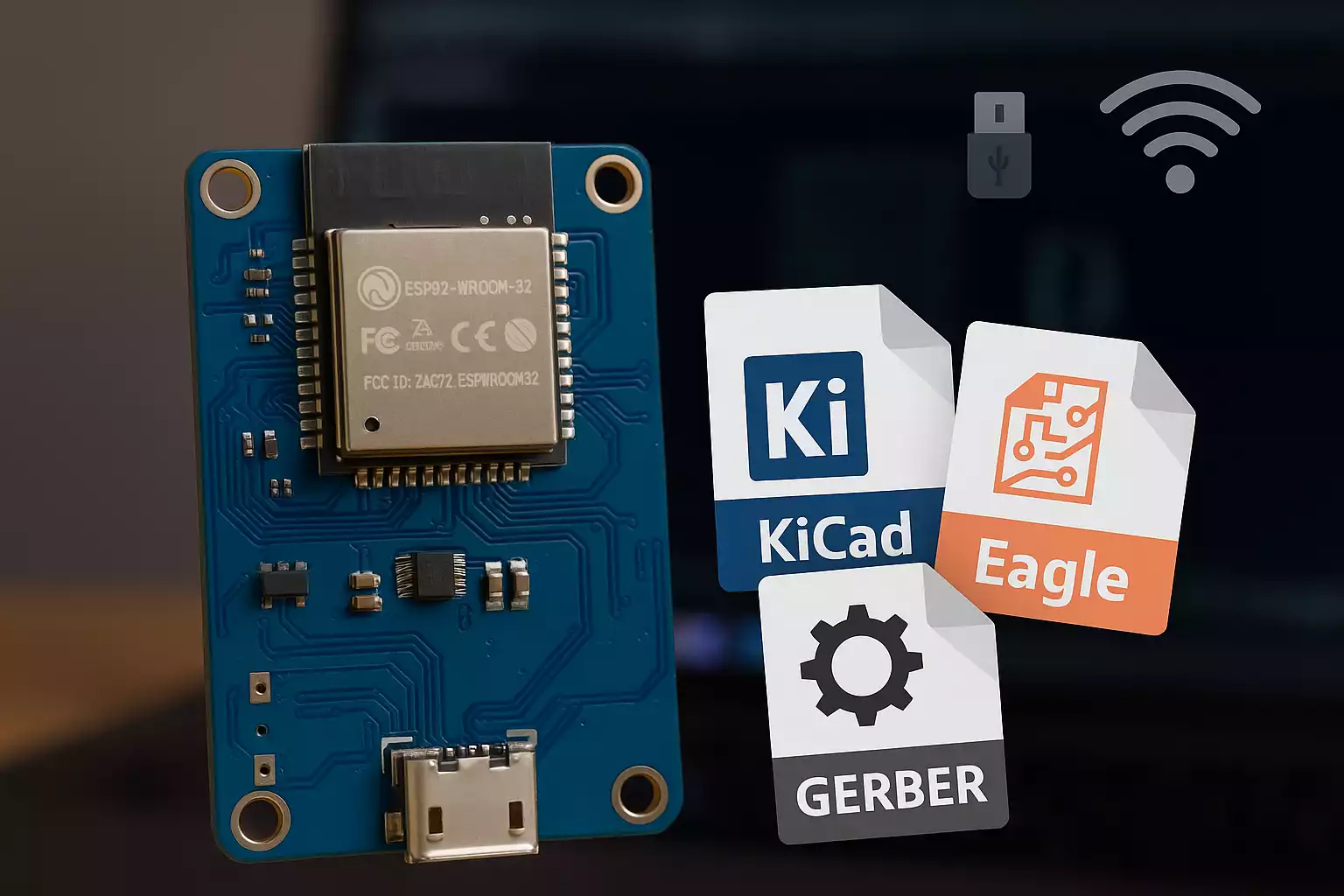
TL;DR Download Zone — Grab Files and Start Prototyping
If you just want to download PCB files and start building, here’s the quick list of trusted sources. These include official reference layouts, open-source designs, and community-proven KiCad/Eagle files that you can directly modify or send for production.
Official Reference Designs
Espressif, the company behind ESP32, provides ready-to-use design packages for almost every module. Each package includes:
- Schematic (.sch)
- PCB layout (.brd or .kicad_pcb)
- Gerber files for manufacturing
- Bill of Materials (BOM)
Open-Source Boards
- Adafruit Feather ESP32 V2 – Available in Eagle format. It’s a great, clean design for compact wireless projects.
- SparkFun ESP32 Thing – Also available in Eagle format, this board includes all power and USB circuitry, making it easy to modify.
Community Projects
GitHub and PCB-sharing platforms host hundreds of ESP32 designs. Look for repositories with:
- Recent updates
- Clear file structure (KiCad or Eagle source + Gerbers)
- A readable README with pin mapping and power details

Which File Format Should You Choose?
ESP32 PCB designs are available in several CAD formats. Here’s a quick breakdown so you can pick what fits your workflow.
- KiCad (.kicad_pcb) – Free, open-source, and now widely used. Espressif even maintains official KiCad symbols and footprints for ESP32 modules. It’s perfect for beginners and makers.
- Eagle (.brd/.sch) – The format used by Adafruit and SparkFun. It’s great if you’re following open hardware examples, though Autodesk subscription limits apply.
- Altium Designer (.pcbdoc) – Used in industrial projects or by professional engineers. Espressif’s older references were often in this format, but they can be easily converted to Gerbers.
For most people, KiCad or Eagle is the easiest to use and edit.
Quick Quality Check — Is That ESP32 PCB File Safe to Use?
Before sending any downloaded board for fabrication, take a few minutes to review the design. Here’s what to check:
Antenna and RF Layout
Ensure the antenna area adheres to Espressif’s keep-out rules. No copper pours or traces should be under the antenna zone. This ensures proper wireless performance. If you’re not sure, compare it against an official reference board — Espressif’s layouts are the gold standard.

Power and Decoupling
Every ESP32 needs a stable 3.3V supply. Verify:
- Proper LDO or DC-DC regulator rated for at least 500 mA
- 0.1 µF and 10 µF decoupling capacitors close to each VDD pin
- Clean ground plane under the chip
USB and Programming Circuit
If you’re using the ESP32-S3, you can skip the USB-to-UART bridge, as it has native USB support.
For ESP32-WROOM or ESP32-C3, ensure that the EN and IO0 pins are pulled correctly for programming.
Manufacturing Readiness
Your Gerber folder should include:
- Top/bottom copper, mask, and silkscreen layers
- Drill and outline files
- BOM and pick-and-place (CPL) for assembly
A quick review in a Gerber viewer, such as Gerbv or KiCad Viewer, ensures that no layers are missing.
Official ESP32 Reference Designs You Can Edit
Here are the most popular Espressif reference packages that you can download, open, and modify.
| ESP32-S3-WROOM-1 | Altium + Gerber | Dual-core, Wi-Fi + BLE, native USB | General-purpose IoT |
| ESP32-C3-MINI-1 | KiCad + Gerber | Compact RISC-V, low power | Battery devices |
| ESP32-WROOM-32E | Altium + Gerber | Proven layout, external antenna option | Learning & prototyping |
| ESP32-WROOM-32UE | Gerber + SCH | u.FL antenna connector | Long-range applications |
These files are verified and production-ready. You can use them as a starting point for your own design — just add peripherals or connectors you need.
Open-Source ESP32 Projects — Modify and Go
If you prefer open-source designs that you can freely tweak, these are top picks.
Adafruit Feather ESP32 V2
Adafruit’s Eagle files are clean, easy to understand, and fully documented. It’s a great choice for small form-factor boards. You can remove the LiPo charger if not needed, or expand I/O connectors for your sensors.
SparkFun ESP32 Thing
One of the earliest open ESP32 boards is still widely used. The design includes power management, USB, and programming interface — perfect for studying reference circuitry.
Community Templates
On GitHub, search “ESP32 KiCad PCB” or “ESP32 breakout board.”
Many makers share lightweight, minimalist designs that you can customize by changing footprints or silkscreen to make them your own. Just verify the file integrity and date before ordering.
KiCad Workflow — From Download to Fabrication
Let’s say you found a KiCad project online. Here’s how to go from file download to a finished PCB in your hands.
1. Import the Project
Open the .kicad_pro or .kicad_pcb file in KiCad 7 or later.
If components appear missing, install Espressif’s official KiCad symbol and footprint library, available on GitHub.
2. Check and Edit
Adjust:
- USB traces for proper differential length and routing
- Button and header placement (BOOT, EN, GPIOs)
- Board outline if you plan to fit a case or shield.
3. Run DRC (Design Rule Check)
KiCad will highlight clearance or unconnected net issues. Fix them before generating output files.
4. Generate Manufacturing Files
Go to File → Plot → Gerber. Export:
- Gerber layers (top/bottom copper, mask, silkscreen)
- Drill files (.drl)
- Assembly files (CPL + BOM)
5. Order Your Boards
Upload these files to a PCB manufacturer, such as FastTurn PCBs, JLCPCB, or PCBWay.
Typical parameters:
- Thickness: 1.6 mm
- Copper: 1 oz
- Surface finish: ENIG or HASL
- Solder mask: Green or black
In 5–7 days, your custom ESP32 boards can arrive ready for soldering.
EasyEDA Fast-Track — Make a Board in Three Hours
If you prefer a browser-based tool, EasyEDA provides a straightforward way to transition from schematic to order in one sitting. The workflow is similar to the “3-hour build” shown in Fedevel’s tutorial.
Step-by-Step Overview
- Create a new project and add the ESP32 module symbol from the EasyEDA library.
- Add power and USB circuits — the LDO, Type-C connector, and download buttons.
- Set design rules (trace width, clearance, board outline).
- Run DRC and fix warnings.
- Export Gerber + BOM + CPL directly to JLCPCB’s ordering system.
- Order and assemble — boards often arrive within a week.

Conclusion
Designing an ESP32 PCB doesn’t have to be hard. Thanks to open hardware and official references, you can:
- Download proven design files.
- Edit and verify in KiCad or Eagle.
- Generate Gerbers and order.
- Assemble, test, and iterate.
Whether you’re prototyping a sensor node or building a Wi-Fi gateway, starting from these trusted ESP32 PCB files will save you time and headaches.
